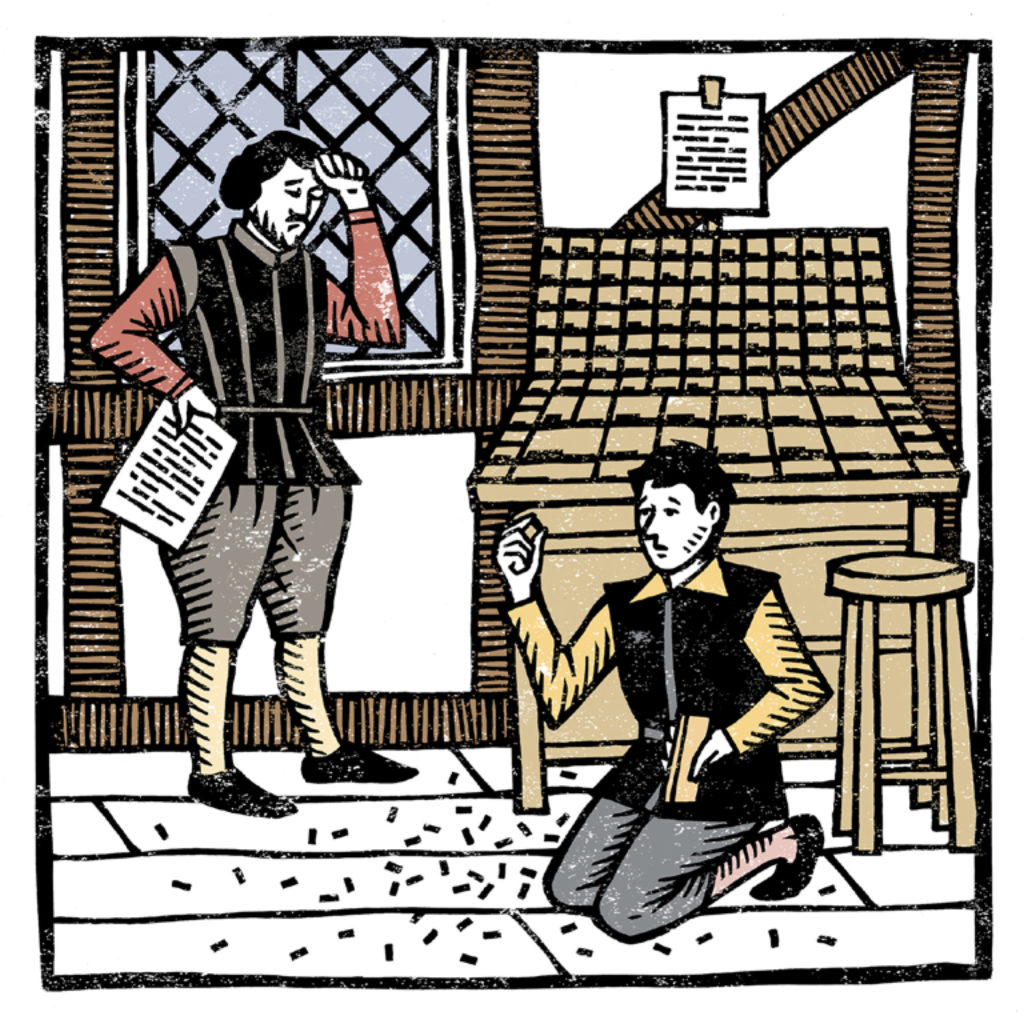
‘we cannot go beyond our own powers’
The handwritten edited playscripts or marked-up quartos were taken to the Jaggards’ printing shop. There, several compositors copied them into metal type, ready for printing.
None of the compositors was perfect: the new apprentice John Leason made more mistakes than most…
Learning on the job
When the editing of each play was finished, it could be taken to the Jaggards’ printing shop. There, a worker called a Compositor copied the handwritten script. He recreated each word, letter by letter, using fragments of metal called ‘sorts’ or ‘types’. Each metal type had at one end a character (a letter, a number, or a punctuation sign). The compositor selected the types from ‘typecases’. An upper case contained the capitals, while a lower case contained small letters.
The types were arranged side-by-side in a hand-held ‘composing stick’. Shorter blank types blocked out the spaces between words. After completing a few lines, the Compositor saved his work by transferring them to a shallow tray called a ‘galley’. He continued until he had all of the lines needed for printing a sheet. The lines of type were arranged tightly together to make a solid ‘forme’, which for the Folio printed two pages. This was locked into a heavy metal frame called a ‘chase’.
Once the prints were made, the forme was unlocked from the chase: the types washed and dried, and the compositor put them back into the typecases, ready to be used again.
At least five compositors set types for the First Folio. One of them, John Leason, started as a teenage apprentice at the Jaggards’ in November 1622. An apprenticeship was supposed to last seven years, but within five months, he was setting some of Shakespeare’s greatest tragedies. His lack of experience meant he made many mistakes. The picture imagines him in all sorts of trouble. Even the most experienced compositors were not perfect: there are errors throughout the Folio.
Printing shops owned only enough type to put together a few pages. Type had to be reused for many different pages. In total, about four million type-settings were needed to print the First Folio’s 908 pages.




